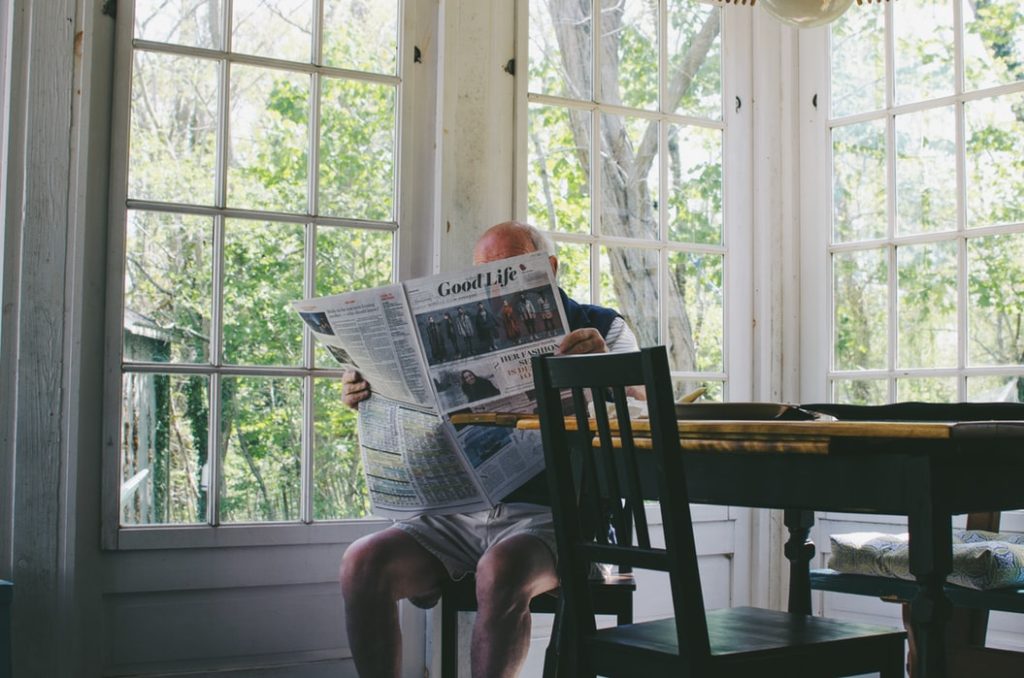
Image source: https://unsplash.com/photos/tUyYnO_VdP0
When our family members get older, they often find moving around the house more challenging than they used to. And while they are not always ready to admit to this fact, it’s up to us to make their houses a bit more senior-friendly.
Here are the seven ways you can help a senior enjoy their space just a bit more.
Think about the knobs
Doorknobs are such an everyday, mundane item, that we often forget to consider how difficult they may be to handle for someone who has arthritis or whose joints are just not that mobile anymore.
Swap out your doorknobs, cabinet handles, and even faucets for something that is a bit easier to maneuver. This simple upgrade can simultaneously elevate the interior of the space and help a senior get about.
Light it up
Lighting is very important in seniors’ homes, as dark corners and uneven surfaces easily make for a hazardous situation.
Make sure that the hallways, the kitchen, and the bathroom are especially well lit. There should be no dark shadows and unclear avenues in the spaces that are most frequently traversed.
Prevent falls and slips
When a senior falls, they can not only suffer some serious bruising, but there is also the potential hazard of breaking an arm or a hip. These types of injuries can cause their quality of life to deteriorate rapidly.
Make sure you check all the walking surfaces in the home and remove any rugs that might get caught under someone’s feet. Invest in carpets or anti-slip mats instead.
Also, make sure there are plenty of quality mats in the bathroom and around the kitchen sink. Keep in mind that the combination of water on tile is another hazardous one.
Check the stairs
Stairs can be a particular challenge to a senior, but don’t try to force them to move downstairs if they can still safely climb up.
All you need to do is make sure that the banister is sturdy and strong, and that it offers a very firm grip. Also make sure that each step is clearly defined and easy to distinguish and add a rug (that you tack to the stair) or a runner that is secured to each individual stair.
If you currently have individual mats or rugs on each stair, swap those out. Make sure that the lighting on the stairs is good, and that there is a phone (or even a panic button) at the bottom of the stairs, somewhere where it can be reached if the senior should tumble.
Consider the bathroom
Bathrooms are often the space that needs to undergo the most change to make it more senior-friendly.
Start by replacing the tub with a shower. You might need to install a shower chair as well. Then, move on to placing non-slip grips at strategic locations, where they facilitate movement and ensure the senior’s safety.
Make sure all the cabinets are easy to reach, and that you take a peek inside once in a while, and remove products (and especially medication) that are out of date.
You can also turn down the water heater, as that will ensure there will be no scalding in case they accidentally turn the tap the wrong way.
Make the entryway safe
Entryways are often a bit of a pain in most homes: there are shoes to discard, umbrella stands, coat hangers, and then you have to put your keys and shopping down somewhere.
As multitasking is a slip and fall hazard, make sure you make the senior’s entrance into their home as smooth as it can be.
Provide a surface where they can put their keys and parcels down (both inside the house and outside the door), make sure they have a space to store their shoes in (so as not to trip on one when walking in), and remove any obstacles from their path. This might mean you need to encroach on another room if the entryway is too small, but adding some mats to the floor will make walking in with muddy shoes less of an issue.
Add handles and bars where needed
If you need to install a few bars and handles around the home, make sure they are strategically placed. You’ll want them wherever the senior might have trouble with walking or tripping.
Consider their actual movements, as opposed to what you think the best option would be. After all, what use is a grip bar if it’s way out of reach?
Final thoughts
Small changes can make a huge difference in the life of a senior. That’s why it pays off to take the time to consider the house as a whole and how you can upgrade it to fit their needs.
